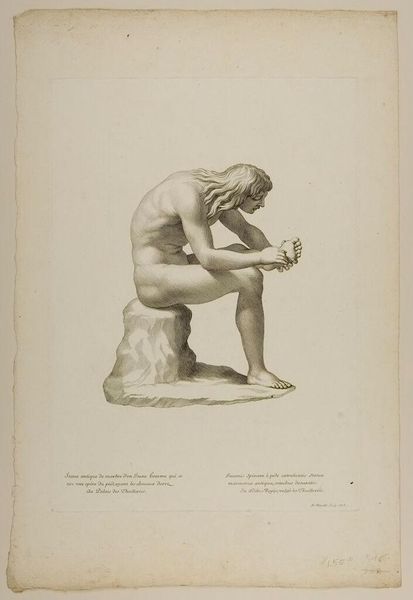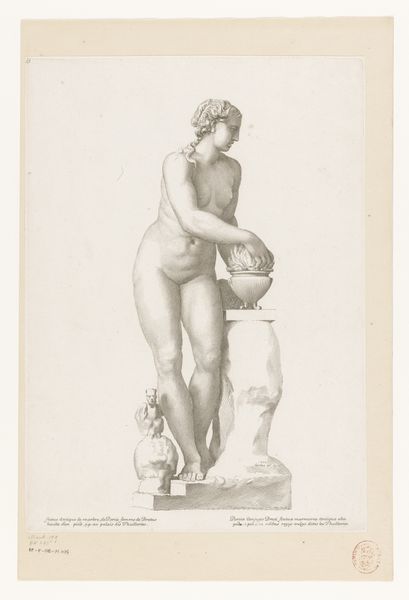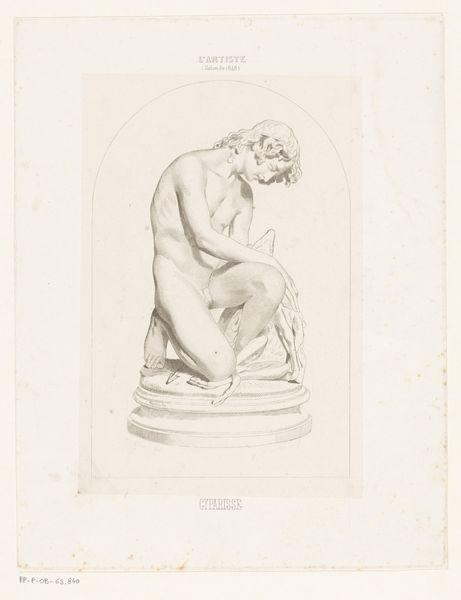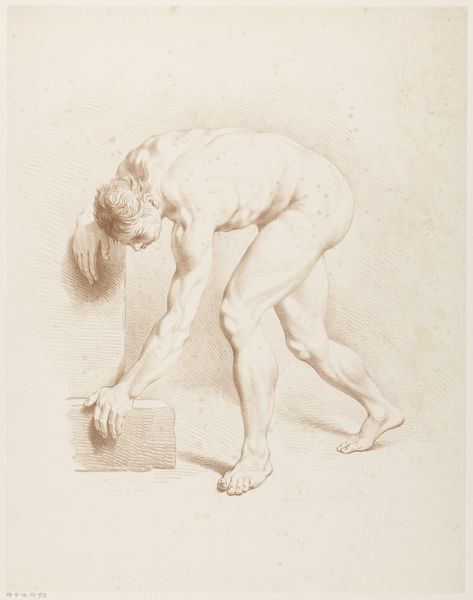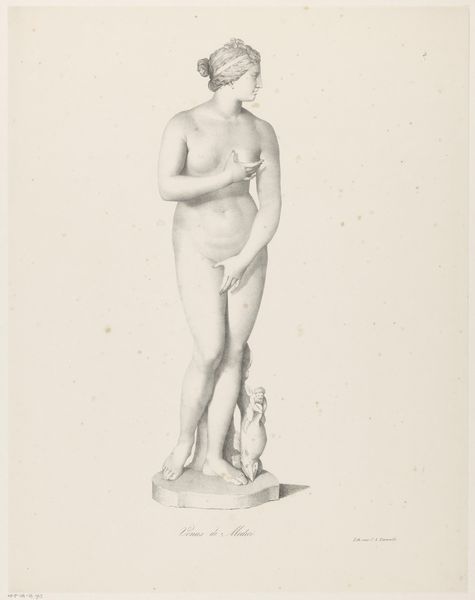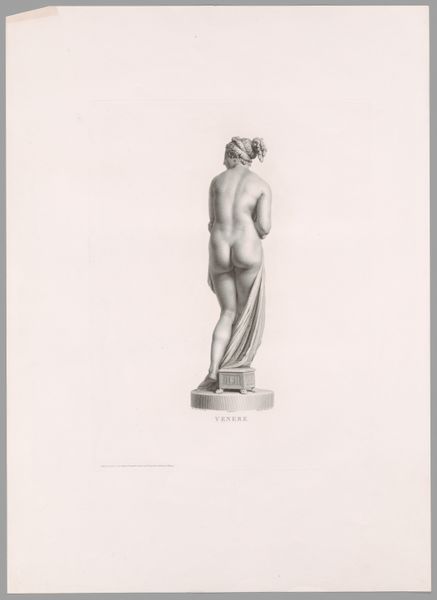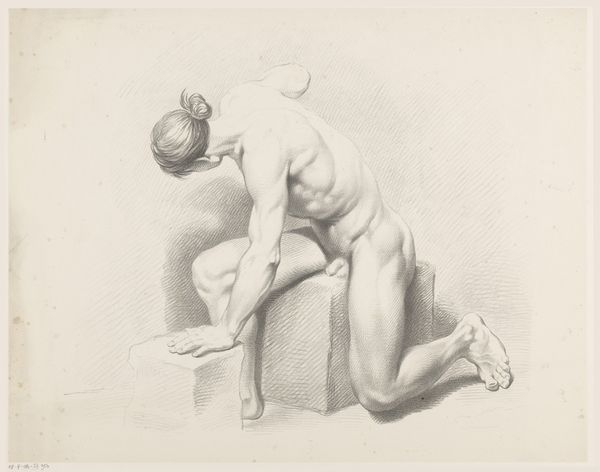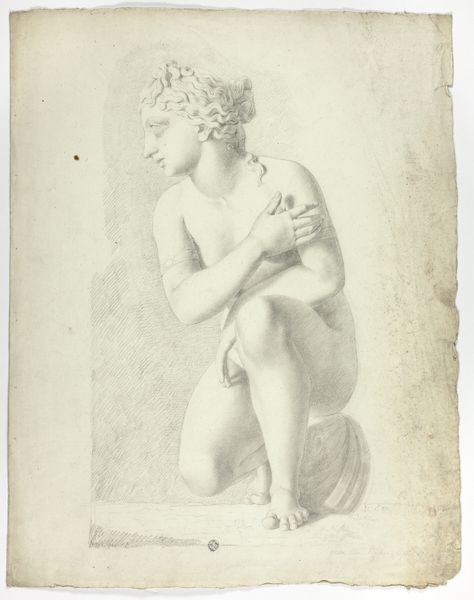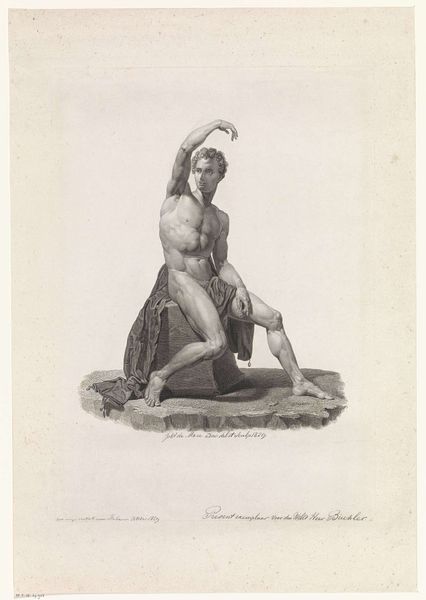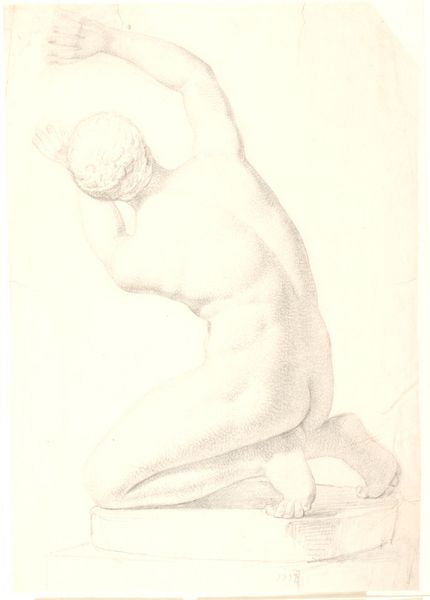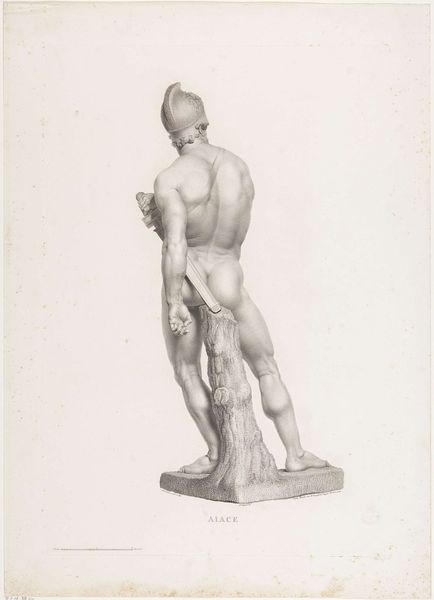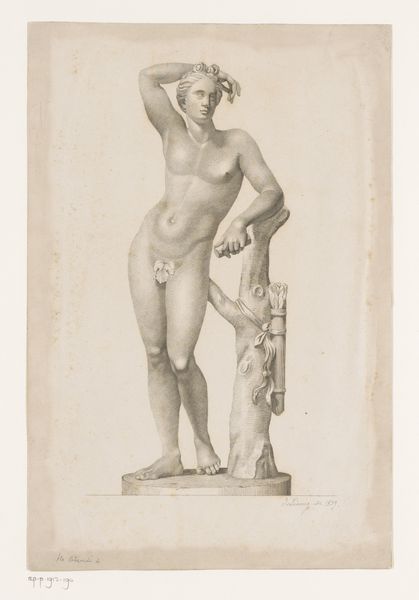
Dimensions: height 391 mm, width 278 mm
Copyright: Rijks Museum: Open Domain
Editor: This is Etienne Baudet's 1678 engraving, "Antique statue of a boy with a thorn in his foot (Spinario)." There's a serene, almost melancholic quality to this depiction of a young boy so focused on such a small discomfort. What do you see in this piece? Curator: The Spinario, or boy pulling a thorn from his foot, carries a weight far beyond its seemingly simple subject. Notice how the artist returns to antiquity in order to establish ideas of idealized beauty in his contemporary period. What meanings or stories might be evoked through this artistic representation and recalling the past? Editor: I see a universal experience, but elevated through the classical form. Is it about innocence interrupted, maybe? Curator: Perhaps. Think about how physical pain translates into the broader human condition. The thorn becomes a symbol, doesn’t it? A small irritant blown out of proportion. Is he a victor or a victim? Editor: A bit of both, I suppose. He’s actively addressing the problem, but it also speaks to the vulnerability of youth. Curator: Precisely. This echoes the Stoic philosophy so prevalent during the Neoclassical period. There’s resilience in facing discomfort. Think of it as not just pulling out a thorn, but overcoming adversity through introspection. A symbol that can stand in for the broader experience of the human. How does knowing this cultural context impact your appreciation of the piece? Editor: It makes me see past the immediate narrative and consider the deeper, timeless message about the self. Curator: Yes. Art offers a fascinating record of humanity, etched in symbols, connecting us across time. Editor: I hadn't thought of it that way, that is very thought provoking! I see the statue with new eyes now, understanding how classical symbols speak volumes about human endurance.
Comments
No comments
Be the first to comment and join the conversation on the ultimate creative platform.
